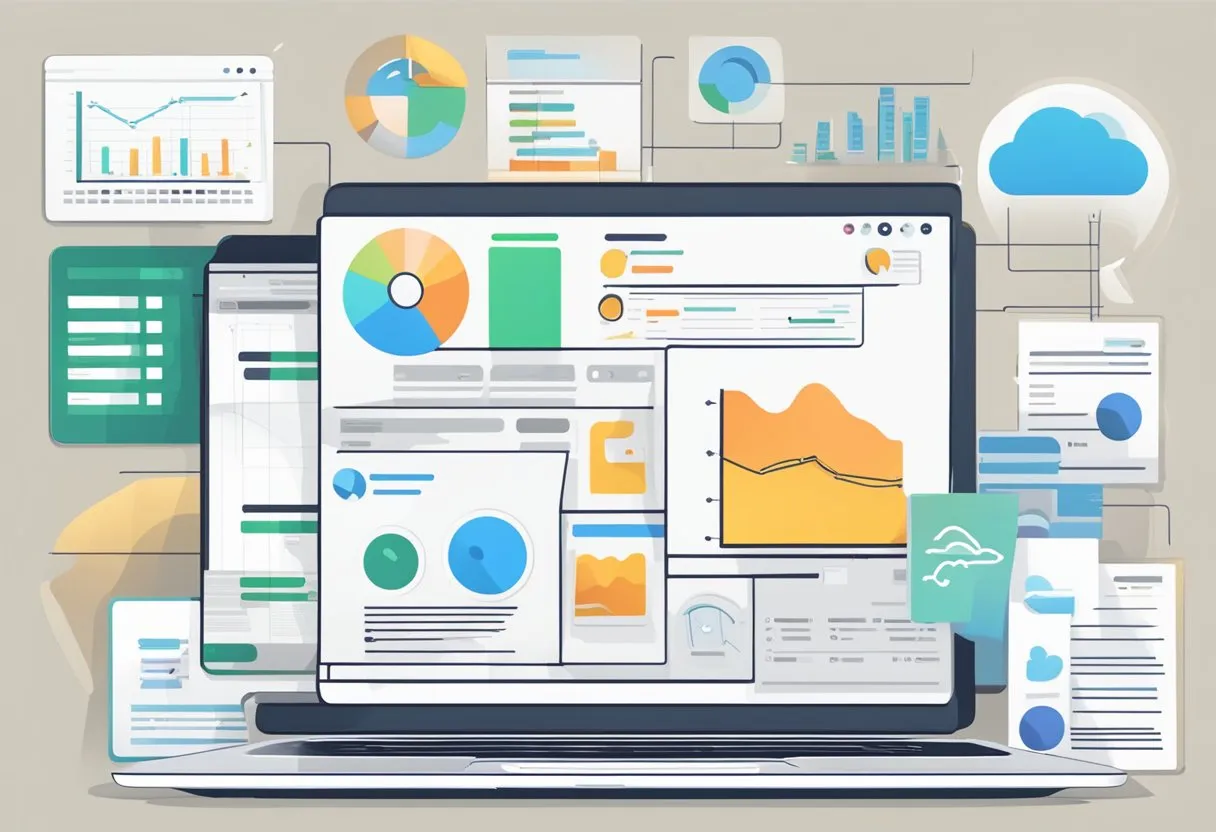Landing page requirements for Google Ads: Essential elements for campaign success
Google Ads can drive traffic to your website, but to turn clicks into customers, you need a strong landing page. A landing page is where people end up after clicking your ad. It’s crucial to make this page effective.

A good landing page for Google Ads should match the ad’s message, be easy to use, and help visitors take action. This means having clear headlines, relevant content, and a simple way for people to do what you want them to do, like buy a product or sign up for a service.
Creating a great landing page takes some work, but it’s worth it. When done right, it can boost your conversions and make your ad spending more effective. Let’s look at what makes a landing page work well with Google Ads and how you can improve yours.
Key Takeaways
- Landing pages should align with ad content and be user-friendly
- Clear calls-to-action and relevant information improve conversion rates
- Regular testing and optimization are key to landing page success
Understanding Google Ads and Landing Pages
Google Ads and landing pages work together to create effective online advertising campaigns. Quality landing pages can boost ad performance and reduce costs. Let’s explore how these elements interact and impact key metrics.
The Role of Landing Pages in Ad Campaigns
Landing pages are where users arrive after clicking on a Google ad. They play a crucial role in converting clicks into customers. A good landing page matches the ad’s message and offers clear, relevant information.
Effective landing pages should:
- Match the ad’s content and keywords
- Provide a seamless user experience
- Have a clear call-to-action
- Load quickly on all devices
Well-designed landing pages can improve conversion rates and reduce bounce rates. This signals to Google that the ad is relevant and valuable to users.
Key Terms: Quality Score, Ad Rankings, and Cost Per Click
Quality Score measures how relevant and useful your ads, keywords, and landing pages are to users. It affects ad rankings and costs.
Ad rankings determine where ads appear in search results. Higher rankings mean more visibility. Factors influencing rankings include:
- Bid amount
- Quality Score
- Ad relevance
- Landing page experience
Cost Per Click (CPC) is the amount paid when someone clicks on an ad. Higher Quality Scores can lead to lower CPCs, making campaigns more cost-effective.
Designing Effective Landing Pages
Creating a landing page that converts visitors into customers requires careful planning and execution. The right mix of visuals, copy, and user experience can make a big difference in your campaign’s success.
The Importance of High-Quality Images and Visual Elements
High-quality images and visual elements play a crucial role in landing page design. They grab attention and convey information quickly. Use professional photos or graphics that relate to your product or service. Avoid stock images that look fake or generic.
Infographics can explain complex ideas simply. Charts and graphs show data in an easy-to-understand way. Icons can guide users to important sections.
Color choices matter too. Pick a scheme that matches your brand and creates the right mood. Use contrast to highlight key elements like buttons.
Remember to optimize images for fast loading. Large file sizes can slow down your page and frustrate visitors.
Crafting Compelling Ad Copy and Calls to Action
Your landing page copy should be clear, concise, and focused on benefits. Explain how your offer solves a problem or improves the visitor’s life. Use bullet points to list key features or advantages.
The headline is crucial. Make it attention-grabbing and relevant to your ad. It should clearly state your main value proposition.
Calls to action (CTAs) need to stand out. Use action words like “Get,” “Start,” or “Try.” Make buttons large and in a contrasting color. Place CTAs where they’re easily seen, like above the fold and at the end of sections.
Include trust signals like customer testimonials or security badges. These help overcome doubts and boost conversions.
Optimizing User Experience and Page Speed
A smooth user experience is vital for keeping visitors engaged. Design an intuitive layout with a clear hierarchy of information. Use headings, subheadings, and short paragraphs to break up text.
Make sure your page is mobile-friendly. Many users will visit on smartphones or tablets. Test on different devices to ensure everything looks good and works properly.
Page speed is crucial for both user experience and search rankings. Optimize images, minify code, and use browser caching to speed up load times. Consider using AMP (Accelerated Mobile Pages) for even faster mobile loading.
Use A/B testing to refine your design. Try different layouts, copy, or CTAs to see what performs best. Small changes can lead to big improvements in conversion rates.
Conversion Optimization Strategies
Improving landing pages for Google Ads requires focused strategies to boost conversions. These methods rely on data-driven testing, building trust, and refining key elements like forms and buttons.
A/B Testing and Analytics Insights
A/B testing compares two versions of a landing page to see which performs better. This method helps identify what changes lead to more conversions. To run effective tests:
- Choose one element to test at a time (e.g. headline, image, button color)
- Create two versions of the page
- Split traffic evenly between versions
- Collect data on user behavior and conversion rates
- Analyze results to determine the winner
Google Analytics provides valuable insights into user behavior. It tracks metrics like bounce rate, time on page, and conversion paths. These data points help pinpoint areas for improvement on landing pages.
Building Trust with Social Proof
Social proof builds credibility and encourages visitors to convert. Effective types of social proof include:
- Customer testimonials
- Reviews and ratings
- Case studies
- Trust badges from well-known brands
- Media mentions or awards
Place social proof elements strategically on the landing page. Near the call-to-action or product details often works well. Keep testimonials short and include the person’s name and photo if possible.
Form Fields and Call-to-Action Button Design
Form design impacts conversion rates. Keep forms short, asking only for essential information. Use clear labels and place them above input fields. Group related fields together and use a single-column layout for better readability.
Call-to-action (CTA) buttons should stand out visually. Use contrasting colors and make buttons large enough to tap on mobile devices. Action-oriented text like “Get Started” or “Claim Your Free Trial” works better than generic phrases.
Google Ads recommends aligning your CTA with the ad text and keywords. This consistency helps meet user expectations and can boost conversion rates.
Measuring Performance and Analytics

Tracking and analyzing landing page performance is crucial for Google Ads success. Key metrics provide insights to optimize campaigns and improve conversion rates.
Conversion Tracking and Analytics Setup
Google Ads conversion tracking is essential for measuring landing page effectiveness. Advertisers should set up tracking codes on their webpages to record user actions.
Google Analytics integration enhances data collection. It offers deeper insights into user behavior and page performance.
To set up conversion tracking:
- Define conversion actions (e.g., purchases, sign-ups)
- Add conversion tags to landing pages
- Link Google Ads and Google Analytics accounts
Proper setup allows advertisers to see which ads and keywords drive conversions. This data helps optimize campaigns for better results.
Analyzing Landing Page Performance Metrics
Key metrics for evaluating landing page performance include:
- Conversion rate
- Bounce rate
- Time on page
- Mobile-friendliness
Google Ads provides tools to analyze these metrics. The Landing Pages report shows performance data for each page.
Advertisers should focus on improving low-performing pages. A/B testing different layouts or content can boost conversion rates.
Mobile performance is critical. Google’s Mobile-Friendly test helps ensure pages work well on all devices.
Regular analysis of these metrics guides optimization efforts. It helps advertisers create more effective landing pages and improve ad campaign ROI.
Post-Conversion Strategies

After a user converts, it’s crucial to keep them engaged and nurture the relationship. A well-designed thank you page can enhance user experience and set the stage for future interactions.
Creating a Seamless Thank You Page
A thank you page is more than just a confirmation message. It’s an opportunity to guide users to their next steps.
Make the page visually appealing and consistent with your brand. Use clear, concise language to express gratitude and confirm the action taken.
Provide useful information related to their conversion. This could include order details, delivery estimates, or account setup instructions.
Include a clear call-to-action (CTA) to encourage further engagement. This might be:
- Exploring related products
- Signing up for a newsletter
- Following on social media
- Downloading additional resources
Consider adding social sharing buttons. This allows satisfied customers to spread the word about your offer.
Personalize the experience when possible. Use the user’s name or reference their specific purchase to make the interaction feel more individual.